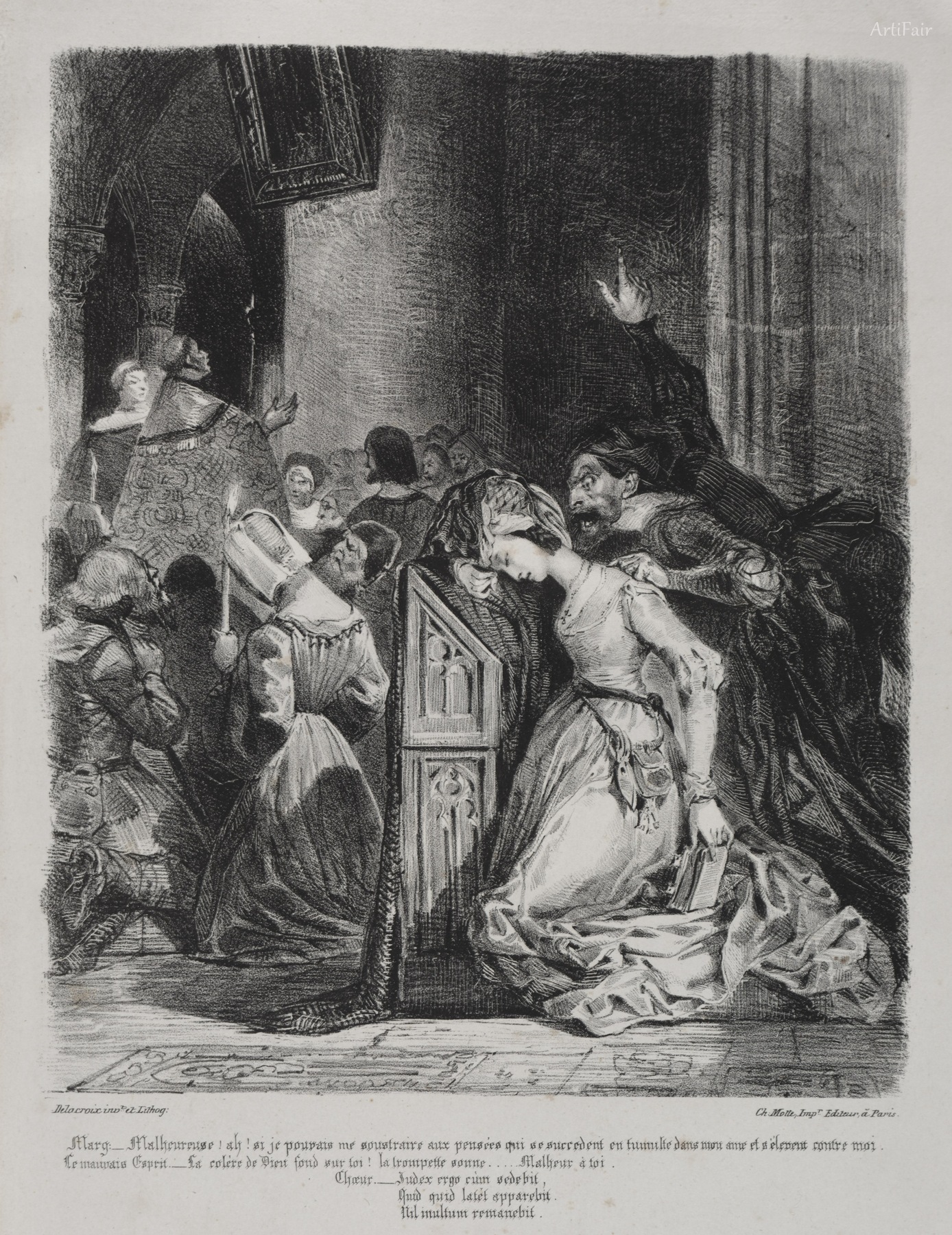
Art Appreciation
In this striking illustration, we witness a poignant moment derived from Goethe's Faustus. The scene depicts Marguerite at church, her facial expression a blend of anguish and fervent prayer, highlighting her internal conflict. Surrounding her, a cluster of figures, cloaked in the austere garb of 19th-century Europe, are engaged in a religious ritual. The artist expertly captures this tension through a dynamic composition where Marguerite's figure is thrust into the foreground, grasping a religious relic, while a shadowy figure in the background hints at looming danger—Faust himself, perhaps. His expression is one of twisted desire, adding a menacing undertone that contrasts sharply with the solemn atmosphere of the church setting.
Delacroix’s technique is remarkably bold; the etched lines of the lithograph create a sense of movement and emotion, drawing the viewer into the sacred yet fraught moment. The interplay of light and shadow enhances the drama of the scene, employing a monochromatic palette that emphasizes the weight of the characters' emotions. The historical context cannot be understated: created in 1828, this piece reflects not only the Romantic era's fascination with the tragic and the sublime but also encapsulates the anxieties of the time regarding morality and redemption. It resonates deeply, offering a narrative rich in emotional complexity and psychological depth.